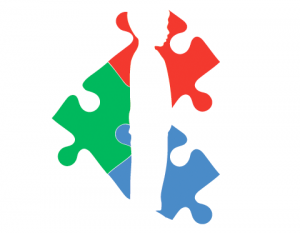Autism Profile
A recent study explored why some people with Autism Spectrum Disorder (ASD) seem to have better social skills than others. Explore this page to learn more about the typical profile of people with ASD.
Autism: A Disorder of Social Disconnect
Overview
With onset in the first years of life, autism presents as a disorder of profound social disconnect rooted in early brain development. A child with autism may appear unaware of his surroundings. He may also fail to respond to the sights and sounds of a social world. Often, with limited speech and language skills, the child follows a different development pattern compared to other children in the same age group. He has difficulty playing with other children and making friends. Alone, the child engages in restricted, repetitive behavior that is hard to understand.
Diagnosis
To date, autism is behaviorally diagnosed by trained clinicians following guidelines set forth by American Psychiatric Association’s manual called DSM (Diagnostic and Statistical Manual).
According to DSM-5, released in May 2013, an autism diagnosis involves deficits in the following two areas:
1. Social interactions and Communications
2. Restricted, repetitive patterns of behavior and interests
The range and degree of autism symptoms falls on a continuum, called the autism spectrum. Therefore, both children with severe deficits as well as those who are mildly affected are considered to have Autism Spectrum Disorder (ASD).
Click here to read more about diagnosing autism
Co-occurring Symptoms in Autism
Autism symptoms range in presentation and severity. Children with autism frequently have an intellectual disability, but some children with autism will have normal intelligence. Children with autism may also have seizures, motor abnormalities, anxiety, sleep cycle disturbances, gastrointestinal problems, immune dysfunction and sensory disturbances. Not all the features are present in every child. Instead, a subset of features underlies autism in each individual.
Click here to read the latest research on co-occuring symptoms in autism
Autism Prevalence
About one in 68 children has been identified with an autism spectrum disorder (ASD)1. Boys are at higher risk for autism, with nearly one in 42 boys receiving an ASD diagnosis, compared to one in 189 girls1. The high prevalence of autism is of major public concern. Increased autism prevalence over previous decades has fueled major scientific research interests and news media focus.
Click here to learn more about autism statistics around the world
Click here to learn about the latest scientific advances in autism research
References:
1. Estimates from CDC's Autism and Developmental Disabilities Monitoring (ADDM) Network, http://www.cdc.gov/mmwr/preview/mmwrhtml/ss6302a1.htm?s_cid=ss6302a1_w



